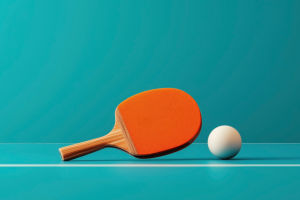In entertainment venues around the world, billiard balls is a highly popular sport, and within this sport, the design and characteristics of billiard balls play a crucial role in the gameplay.
Billiard balls are typically made from a special type of plastic that is precision-engineered to ensure that each ball's weight and size meet international standards.
The standard billiard ball has a diameter of 2.25 inches (approximately 57.15 millimeters) and weighs between 5.5 and 6 ounces (approximately 156 to 170 grams). These balls have a smooth surface, allowing them to roll smoothly on the billiard table, enhancing the fluidity and controllability of the game.
Among the different types of billiards, the most common are nine-ball and eight-ball. Nine-ball consists of nine balls numbered from 1 to 9, along with a white cue ball, while eight-ball comprises fifteen colored balls numbered from 1 to 15 and one white ball.
Each type has its own unique set of rules, but regardless of whether it's nine-ball or eight-ball, the colors and numbers of the billiard balls add strategic and tactical possibilities to the game.
To enhance the visual appeal of the game, modern billiard balls often feature vibrant colors and exquisite designs, making the matches more attractive.
In addition to their basic colors and numbers, the weight distribution of billiard balls is another critical factor in their design. Some high-end billiard balls utilize more complex internal distribution structures to ensure optimal rebound effects and control during strikes.
This meticulous design not only affects the accuracy of each shot but also directly influences the outcome of matches. For professional billiard players, choosing the right billiard balls is crucial, as it significantly impacts their performance and results.
During competitions, the condition of billiard balls can also be influenced by environmental factors. Changes in temperature and humidity can cause slight variations in the material of the balls, affecting their elasticity and friction.
Therefore, professional billiard players carefully examine each ball's condition before matches to ensure fairness and integrity. Moreover, regular cleaning and maintenance are vital, not only to prolong the lifespan of the billiard balls but also to maintain their optimal performance.
With advancements in technology, more manufacturers are beginning to use new materials and technologies to produce billiard balls.
Some high-end brands have even developed self-cleaning billiard balls that automatically remove dirt from their surfaces during use, maintaining optimal sliding performance.
This innovation greatly enhances the player experience, allowing them to focus more on the game itself without worrying about the equipment's condition.
In both amateur and professional competitions, the type and quality of billiard balls directly impact players' performance and the audience's experience.
Quality equipment allows players to reach higher levels of play, while spectators can enjoy more exciting matches. Therefore, for every billiard enthusiast, understanding and selecting the appropriate billiard balls is an important step in improving their skills and enjoying the game.
Billiard balls play an indispensable role in this sport. From their design to materials and maintenance during use, every detail of billiard balls is closely related to the matches.
For anyone looking to improve their skills in billiards, gaining a deeper understanding of this crucial game element will help them achieve better results on the table.
In the future, as more new technologies emerge, the design and functionality of billiard balls will continue to evolve, providing players with an even better gaming experience.


